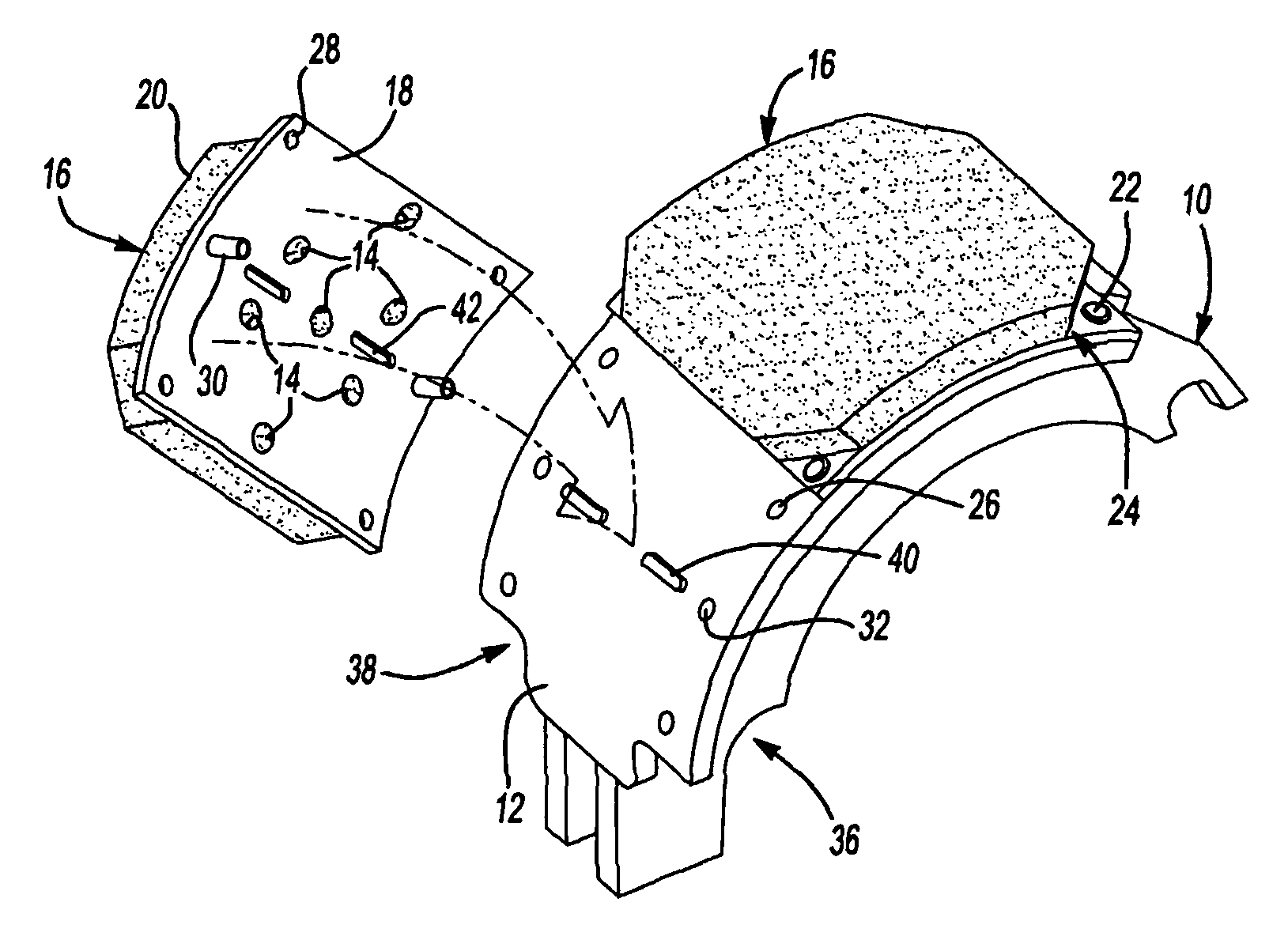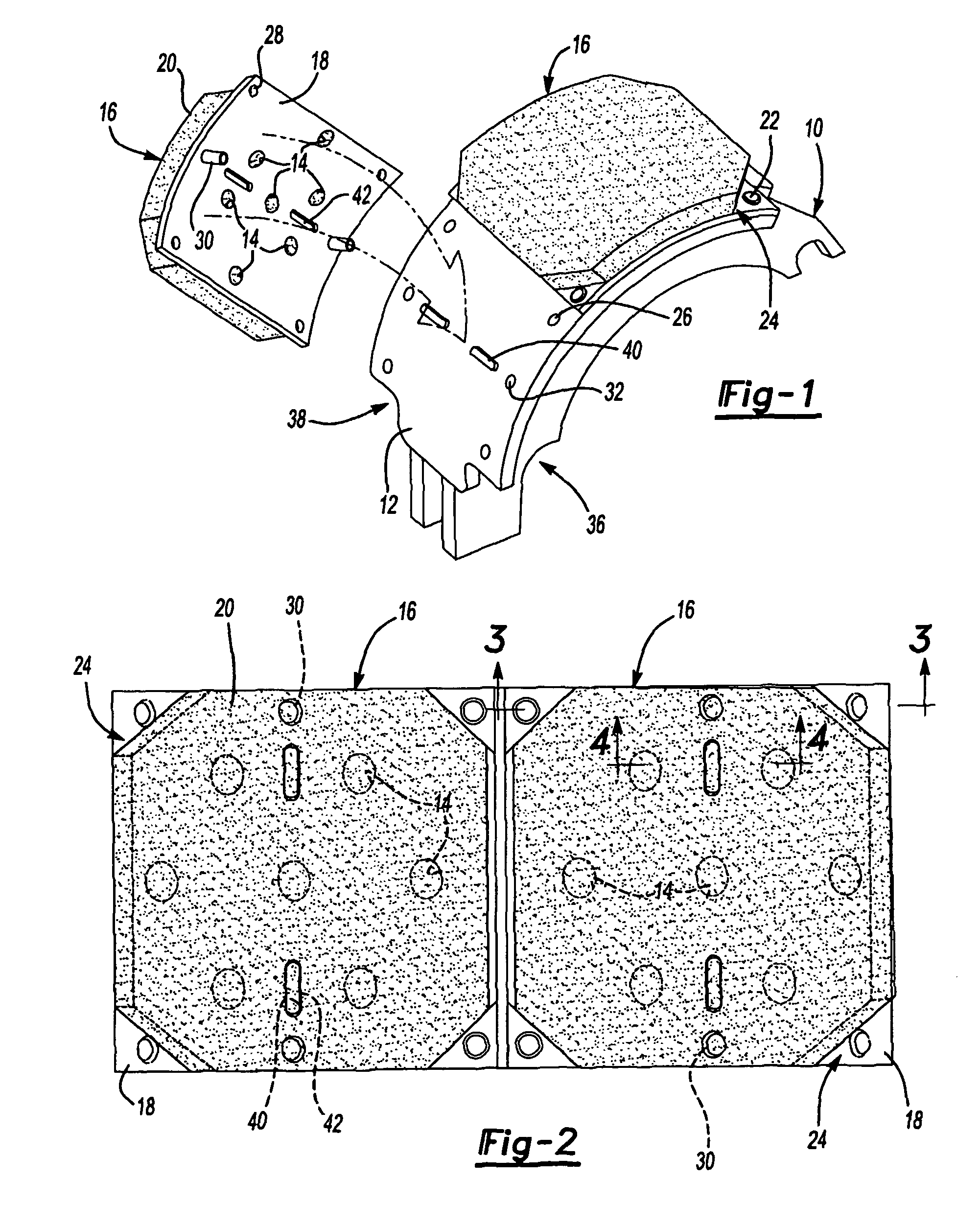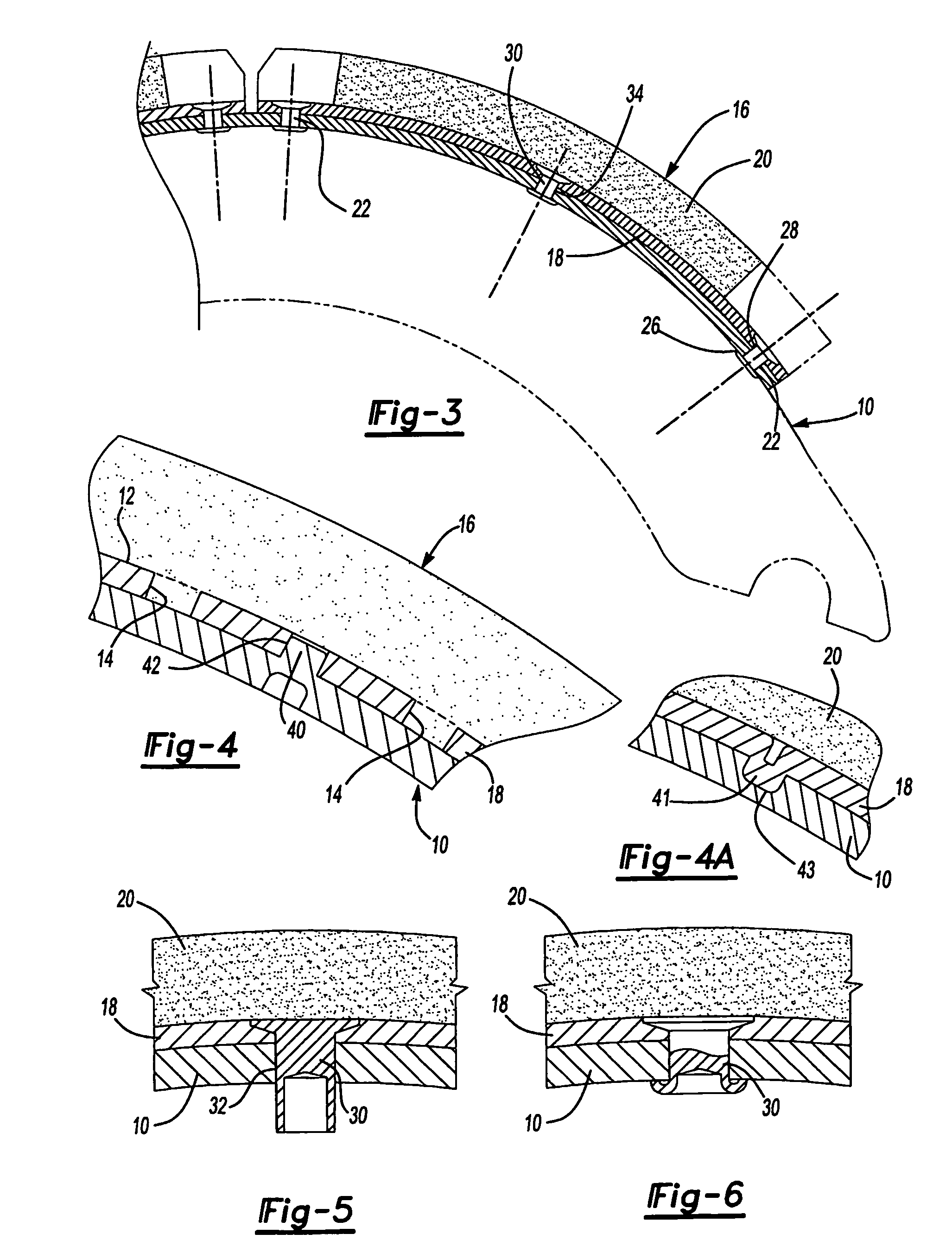Brake shoe and brake lining blocks with keyed connection
a technology of brake lining and drum brake, which is applied in the direction of friction lining, brake type, braking member, etc., can solve the problems of reducing braking performance, reducing braking performance, and cracking or breaking of the lining after securing to the shoe, so as to increase the resistance to shear forces
- Summary
- Abstract
- Description
- Claims
- Application Information
AI Technical Summary
Benefits of technology
Problems solved by technology
Method used
Image
Examples
Embodiment Construction
)
[0048]Referring to FIG. 1, a brake shoe 10 having a cylindrical outer surface 12 is illustrated with one brake plate 16 assembled to the cylindrical outer surface 12 and a second brake plate 16 that is shown unattached to the brake shoe 10. Each of the brake plates 16 includes a backing plate 18 to which a layer of friction material 20 is bonded. A plurality of apertures 14 are provided in the backing plate 18 into which friction material 20 is integrally molded to mechanically attach the friction material 20 to the backing plate 18.
[0049]The brake plates 16 are attached, in part, by fasteners 22 that are secured to the backing plate 18 at open corners 24. While the illustrated embodiment shows rivets 22, other fasteners can be used instead of rivets and references to rivets should be construed to include other types of fasteners as well. The open corners 24 are areas where no friction material 20 is bonded to the backing plate 18. Alternatively, the layer of friction material 20 c...
PUM
 Login to View More
Login to View More Abstract
Description
Claims
Application Information
 Login to View More
Login to View More - R&D
- Intellectual Property
- Life Sciences
- Materials
- Tech Scout
- Unparalleled Data Quality
- Higher Quality Content
- 60% Fewer Hallucinations
Browse by: Latest US Patents, China's latest patents, Technical Efficacy Thesaurus, Application Domain, Technology Topic, Popular Technical Reports.
© 2025 PatSnap. All rights reserved.Legal|Privacy policy|Modern Slavery Act Transparency Statement|Sitemap|About US| Contact US: help@patsnap.com



